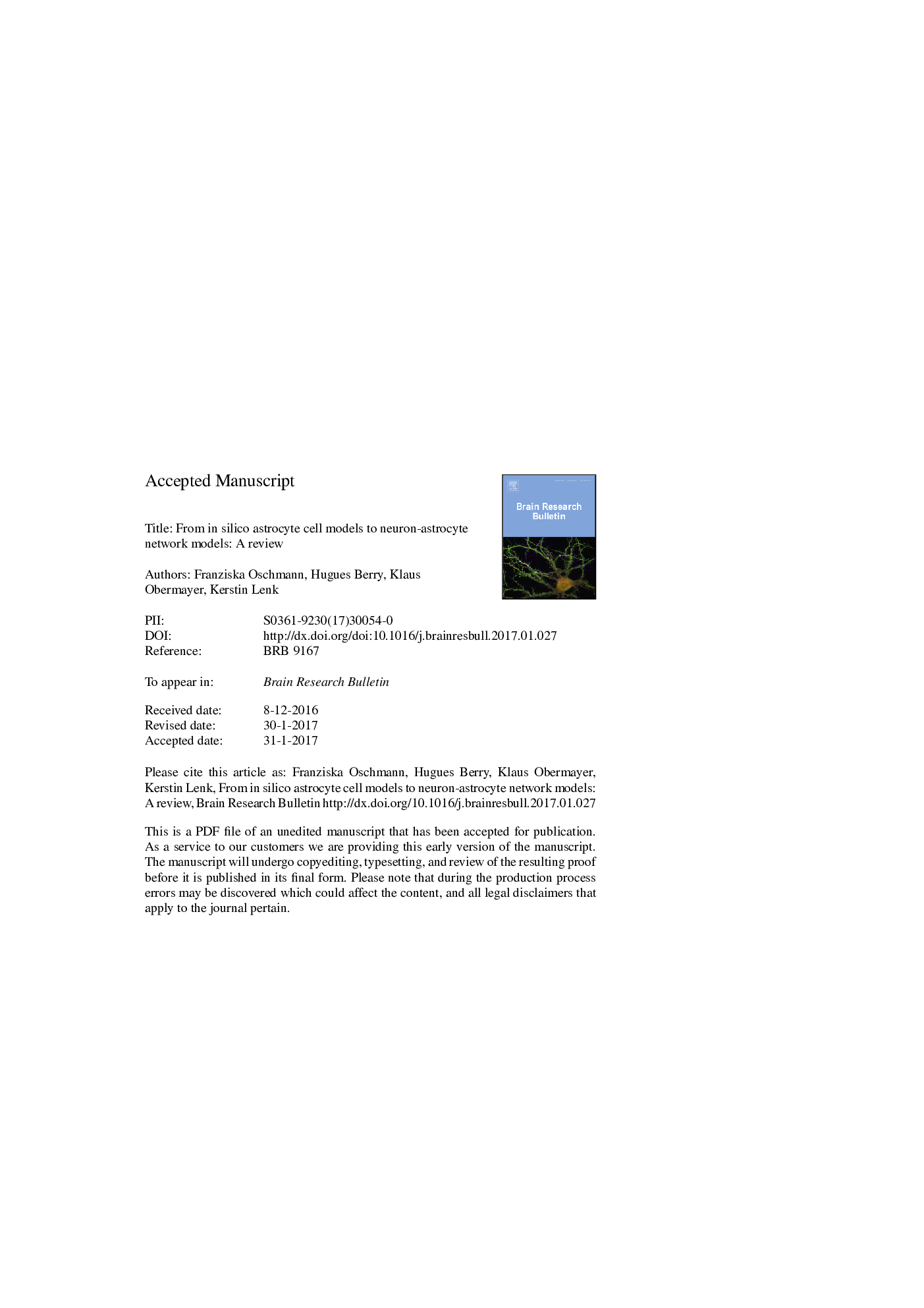| Article ID | Journal | Published Year | Pages | File Type |
|---|---|---|---|---|
| 8839053 | Brain Research Bulletin | 2018 | 16 Pages |
Abstract
The idea that astrocytes may be active partners in synaptic information processing has recently emerged from abundant experimental reports. Because of their spatial proximity to neurons and their bidirectional communication with them, astrocytes are now considered as an important third element of the synapse. Astrocytes integrate and process synaptic information and by doing so generate cytosolic calcium signals that are believed to reflect neuronal transmitter release. Moreover, they regulate neuronal information transmission by releasing gliotransmitters into the synaptic cleft affecting both pre- and postsynaptic receptors. Concurrent with the first experimental reports of the astrocytic impact on neural network dynamics, computational models describing astrocytic functions have been developed. In this review, we give an overview over the published computational models of astrocytic functions, from single-cell dynamics to the tripartite synapse level and network models of astrocytes and neurons.
Keywords
mGluRGPCRNMDAIP3inositol triphosphateAMPAIP3RN-methyl-d-aspartic acidVGCCAFMG-protein-coupled receptorsAdenosine TriphosphateATPAstrocyteα-amino-3-hydroxy-5-methyl-4-isoxazolepropionic acidγ-aminobutyric acidIn silicoBasket celltripartite synapsenetworkendoplasmic reticulumSimulationamplitude modulationFrequency modulationNeuronvoltage-gated Ca2+ channelsGABAIP3 receptorMetabotropic glutamate receptors
Related Topics
Life Sciences
Neuroscience
Cellular and Molecular Neuroscience
Authors
Franziska Oschmann, Hugues Berry, Klaus Obermayer, Kerstin Lenk,
